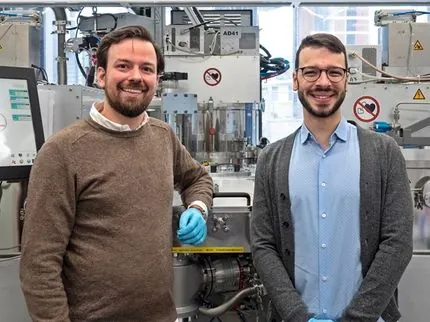
Breakthrough in Lithium-Ion Conductors: A New World Record!
2025-05-12
Author: Rajesh
In a stunning advancement in battery technology, researchers led by Prof. Thomas F. Fässler at TUM have forged a new path in ion conductivity by innovatively altering a lithium antimonide compound. By substituting some lithium with the metal scandium, they created vacancies in the crystal structure that allow lithium ions to travel faster and more efficiently, setting a **world record for ion conductivity**.
The extraordinary results prompted collaboration with Prof. Hubert Gasteiger’s team at the Chair of Technical Electrochemistry to validate these findings. Tobias Kutsch, a co-author and validation tester, remarked on the challenges posed by the material's dual capability: ‘The challenge arose because it also conducts electricity, requiring us to rethink our measurement techniques.’
Fässler expressed immense optimism about the implications of their discovery: ‘This exciting breakthrough represents a leap forward in materials research. Our incorporation of scandium reveals a novel principle that could serve as a model for future elemental combinations. Although more tests are necessary before moving towards practical applications in battery cells, we're hopeful.’ The implications are significant, especially since materials capable of conducting both ions and electrons hold a key position in enhancing electrode performance. A patent has already been submitted to secure their innovative approach.
This new material not only demonstrates enhanced conductivity but also boasts thermal stability and can be manufactured through established chemical processes. As Jingwen Jiang, the first author and researcher at TUMint.Energy Research, pointed out, this discovery opens the door to an entirely new class of materials: ‘While our combination uses lithium-antimony, the same method is easily applicable to lithium-phosphorus systems. Unlike previous materials which required multiple additional elements for optimization, we only rely on Scandium. We think our findings could revolutionize conductivity improvements across a vast array of materials!’




 Brasil (PT)
Brasil (PT)
 Canada (EN)
Canada (EN)
 Chile (ES)
Chile (ES)
 Česko (CS)
Česko (CS)
 대한민국 (KO)
대한민국 (KO)
 España (ES)
España (ES)
 France (FR)
France (FR)
 Hong Kong (EN)
Hong Kong (EN)
 Italia (IT)
Italia (IT)
 日本 (JA)
日本 (JA)
 Magyarország (HU)
Magyarország (HU)
 Norge (NO)
Norge (NO)
 Polska (PL)
Polska (PL)
 Schweiz (DE)
Schweiz (DE)
 Singapore (EN)
Singapore (EN)
 Sverige (SV)
Sverige (SV)
 Suomi (FI)
Suomi (FI)
 Türkiye (TR)
Türkiye (TR)
 الإمارات العربية المتحدة (AR)
الإمارات العربية المتحدة (AR)